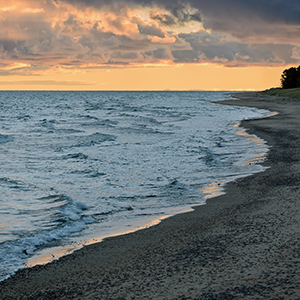Towards ecological flows: status of the benthic macroinvertebrate community during summer low-flow periods in a regulated lowland river

Submitted: 31 March 2023
Accepted: 3 May 2023
Published: 22 May 2023
Accepted: 3 May 2023
Abstract Views: 1381
PDF: 179
HTML: 7
HTML: 7
Publisher's note
All claims expressed in this article are solely those of the authors and do not necessarily represent those of their affiliated organizations, or those of the publisher, the editors and the reviewers. Any product that may be evaluated in this article or claim that may be made by its manufacturer is not guaranteed or endorsed by the publisher.
All claims expressed in this article are solely those of the authors and do not necessarily represent those of their affiliated organizations, or those of the publisher, the editors and the reviewers. Any product that may be evaluated in this article or claim that may be made by its manufacturer is not guaranteed or endorsed by the publisher.
Similar Articles
- Lorenzo Traversetti, Simona Ceschin, Alessandro Manfrin, Massimiliano Scalici, Co-occurrence between macrophytes and macroinvertebrates: towards a new approach for the running waters quality evaluation? , Journal of Limnology: Vol. 74 No. 1 (2015)
- Jacques Mouthon, Michel Magny, Unprecedented changes in mollusc assemblages of the littoral zone in the two largest peri-Alpine French lakes since the last 4500 years , Journal of Limnology: Vol. 73 No. 1 (2014)
- Robin J. Smith, Dayou Zhai, Suktonthip Savatenalinton, Takahiro Kamiya, Na Yu, A review of rice field ostracods (Crustacea) with a checklist of species , Journal of Limnology: Vol. 77 No. 1 (2018)
- Marlene S. Arcifa, Tânia C. dos Santos Ferreira, Claudia Fileto, Maria S. Maioli Castilho-Noll, Taís C. Bunioto, Walter J. Minto, A long-term study on crustacean plankton of a shallow tropical lake: the role of invertebrate predation , Journal of Limnology: Vol. 74 No. 3 (2015)
- Maria Anton-Pardo, Xavier Armengol, Raquel Ortells, Zooplankton biodiversity and community structure vary along spatiotemporal environmental gradients in restored peridunal ponds , Journal of Limnology: Vol. 75 No. 1 (2016)
- Carolina Bustamante-Gil, Eduardo Amat, Andrés Boltovskoy, John J. Ramírez-Restrepo, The first floristic study of freshwater dinoflagellates (Dinophyceae) in Colombia , Journal of Limnology: Vol. 81 (2022)
- María Laura Sánchez, Gonzalo Luis Pérez, Irina Izaguirre, Haydée Pizarro, Influence of underwater light climate on periphyton and phytoplankton communities in shallow lakes from the Pampa plain (Argentina) with contrasting steady states , Journal of Limnology: Vol. 72 No. 1 (2013)
- Giuseppe Alfonso, Riccardo Russo, Genuario Belmonte, First record of the Asian diaptomid Neodiaptomus schmackeri (Poppe & Richard, 1892) (Crustacea: Copepoda: Calanoida) in Europe , Journal of Limnology: Vol. 73 No. 3 (2014)
- Barbara Leoni, Zooplankton predators and prey: body size and stable isotope to investigate the pelagic food web in a deep lake (Lake Iseo, Northern Italy) , Journal of Limnology: Vol. 76 No. 1 (2017)
- Maria Cristina Bruno, Mauro Carolli, Bruno Maiolini, Settling distances of benthic invertebrates in a sediment mobilization simulation in semi-natural flumes , Journal of Limnology: Vol. 75 No. 1 (2016)
<< < 26 27 28 29 30 31 32 33 34 35 > >>
You may also start an advanced similarity search for this article.

 https://doi.org/10.4081/jlimnol.2022.2139
https://doi.org/10.4081/jlimnol.2022.2139






